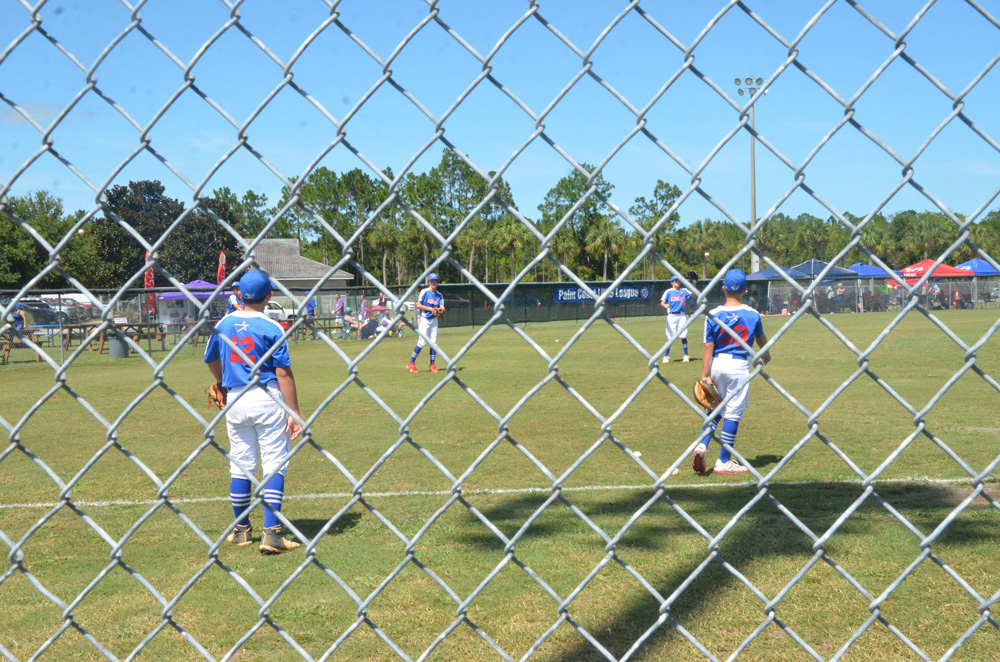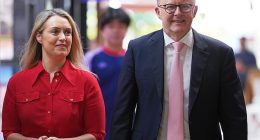
The Palm Coast City Council is embarking on an ambitious plan to explore and perhaps develop and finance, in a private-public partnership, an enormous sports complex on the west side of the yet-undeveloped city. A consultant encouraging the project is projecting rosy figures that would not mortgage tax dollars yet yield ample profits while drawing up to 250,000 athletes and spectators a year.
The figures are speculative and do not easily stand up to scrutiny, but the council is excited about the prospect of such a complex, especially as it faces serious needs in field expansions.
Palm Coast has a deficit in playing fields so severe that its vaunted Sports Alliance, which manages the fields, had to stop accepting new members. Alliance coordinators “do not accept new groups into the alliance because we are out of field capacity,” Chief of Staff Jason De Lorenzo said at a community meeting Wednesday.
Palm Coast has 25 fields, 11 of them lit. Sixteen of the fields are at Indian Trails Sports Complex. The rest are scattered between four neighborhood parks.
Last December the Palm Coast City Council voted to spend $113,000 to study the feasibility and economic impact of a vast, $93 million sports complex in the currently undeveloped west side of the city. Synergy Sports Global, a sports consulting firm that’s developed more than two dozen sports complexes around the country, presented its analysis to the council earlier this month, obviously recommending the construction of more fields, but also indoor facilities.
The presentation on Feb. 13 was focused on cost, economic-benefit projections and funding options. The consultant found the $93 million estimate solid, along with a plan for 20 fields–16 turf, four grass–plus an outdoor stadium and an indoor facility of 112,000 square feet on 180 acres. “The indoor facility may be somewhat inadequate for hosting more of a regional sports offering. You may want to add leasable spaces, community spaces,” Jason Boudrie, Synergy’s owner, said.
“Palm Coast is a great place to put something like this,” he said. “It’s not a major market. When we talk to a lot of organizers, folks that organize tournaments and meets and things like that, one of the things that we hear a lot is–man we do not want to go to Atlanta again, we don’t want to go to Orlando again. We don’t want to go to Tampa. Yeah, those are all great markets for sports, but they’re crowded, it’s hard to get in and out. There’s just so much going on. And so Palm Coast has the foundational structures that’s necessary for this, access to thoroughfares, close proximity to airports.”
Boudrie’s analysis is based on what Palm Coast looks and drives like today. The unspoken logical flaw in that thinking is that Orlando before Disney was once smaller than Lakeland or Palm Coast are today, making it an ideal spot for what it became–snarls included. The more Palm Coast grows, as it is projected to (as its policy makers are wanting it to), the less Boudrie’s analysis holds true, especially when he describes Palm Coast as “a small community with a big reach.” That smallness is clearly waning. A $93 million mega sports complex would accelerate that trend rather than recall “a small community.”
“We feel like the economic impact of the region is low,
“We determined through our financial modeling that the revenues of the facility can support its operating expenses,” he said. “If through our programming recommendations and our modeling, we can show that cash flows can sustain operating expenses, then it’s really a win win for the community and for regional sports tourism.” He did not elaborate.
First, the complex would have to be financed and built. He proposed four funding options. One is to issue bonds, which the city would have to finance, the same way that government bonds pay for courthouses, government buildings and roads. The financing is tax-supported.
Another is to fund it through the capital improvement budget. It’s not clear if Boudrie had a look at Palm Coast’s capital budgets. This year’s capital projects add up to $129,000. But almost $120 million of that is not discretionary, while recreation’s capital budgets fluctuate from $3 to $7 million annually. A $93 million facility could not quite be funded through that mechanism alone.
The third option is to yield land to a developer and have the developer build the complex–and operate it. But that “inherently excludes the community,” Boudrie said, while developers are not good at running sports complexes, he said. “The community becomes excluded and it becomes an elitist kind of facility, charging the highest rates possible for access, and it typically will leave out community members that want to use it for quality of life.”
Boudrie, of course, had designed the presentation to lead to his favored option, “which of the 30 or so projects that we are consulting on now, almost all of them are following this pathway.” That would be a public-private partnership based on a “municipality lease.” The city would provide land, some money, some tax credits. The private side would develop the facility, providing the remainder of required capital. And that private entity ends up operating the facility, and cashing in on it. The city would be the lease holder.
“With the city as the master lease holder, it guarantees quality of life amenities for the community,” Boudrie said. “And then it provides the opportunity for the private side to program it to bring in the economic impact and the sports tourism benefits from it. And so it truly is the balance of both of those worlds. It’s externally operated, and most of these operators they work on on a fee plus incentive basis. With these type of facilities, we generally do not recommend that Parks and Rec or things like that manage these facilities.”
Boudrie does not appear to have been familiar with Palm Coast’s experience with just the type of arrangement he was describing. That arrangement was in place for both the Palm Harbor Golf Club and the city’s tennis center. It was not a good experience. The city lost millions of dollars–until Parks and Recreations took over. It isn’t clear why Parks and Recreation could not replicate at the west side sports complex what it does at the Indian Trails Sports Complex, or now at the Southern Recreation Center.
“The private side again, is very well versed at going out and securing tournaments, bringing in events working with TDC [the Tourist Development Center] working with other events holders and naming rights donors to really run it as a business where the community focus,” he said. But the city’s Sports Alliance, in conjunction with the TDC, has been doing exactly that, rather seamlessly, transparently, and without having the overlay of a private company looking both to recover its capital costs and to make a profit on the back of tournaments and community users. The municipal lease calls for revenue from the facility to be returned to the city–but only after the private side recovers its operating expenses and “lease service.”
“Of the four options this is by and large, the best option in these large capital projects,” Boudrie said. “We’re not going to put ourselves our partners out there. You know, put our necks on the line to bring all this capital in if it’s not going to be supported by its own revenues.” He illustrated his point with what he described as a $90 million, 100-acre project in Odessa, Texas, with 10 soccer fields, 10 ballfields and an indoor facility, plus splash park and amphitheater. (The Texas Tribune last September described it as costing “roughly $70 million,” while “the sports center’s most recent design includes 30 pickleball courts, 20 volleyball courts, 10 hardwood courts, a portable 200-meter banked competition track, fitness centers, conference rooms, offices, a concession area, a cafe and a retailer. An exterior area of the center includes 12 fields for soccer, football and lacrosse, and up to eight softball and baseball fields.”
Odessa fronted $2 million in taxpayer money and raised $5 million from investors, including $1 million from Houston-based Occidental Petroleum.
“Synergy Sports agreed to inject the capital required to see the construction through,” The Tribune reported. “It plans to lease the space to a nonprofit foundation established by the city council, which also appointed the foundation’s board of directors. The foundation will accept donations while co-managing the sports complex alongside RADDSports, a development company that helps cities run large-scale sporting facilities. RADDSports has helped fund the project.”
Jason Boudrie said the same can be replicated in Palm Coast. But his presentation then went into the speculative.
Cost and funding options are tangible numbers that can be calculated at today’s prices in today’s environment. Economic-benefit projections are not. They fall in a different category of speculation and dubious methods equivalent to projecting rainfall 10 or 15 years hence. Politicians and chambers of commerce love them, because it gives them cover to greenlight expensive projects. Economists and more evidence-based analysts don’t, and warn of economic-impact projections’ flaws. (See examples from copious research about the risks and problems with economic-impact “studies” here, here, here, here and here.)
Journalists especially are warned to approach such analyses with great caution and skepticism, since it is through media that generally flawed or unreliable analyses are uncritically disseminated, making the reporting no different than misinformation. While council members accepted Synergy’s projections uncritically, they are presented here only as part of Synergy’s report, but with the above caveats, and the understanding that the projections have not–and cannot–be verified, so cannot be taken as fact so much as guesses–and tendentious guesses at that: Synergy is in the business of developing sports complexes. It is not likely to submit less than rosy projections to a client.
The economic impact analysis for the Palm Coast complex projects an economic impact in year one of $30 million. That economic impact analysis was not Synergy’s. Synergy did not dispute it, however. It called it “low.” It also called “low” a projection of 75,000 hotel room nights booked the first year of the complex’s operation.
“We put together a more detailed financial operating model for the complex that is based on actual performance of actual performing facilities. And so we put real life numbers to these rather than just make assumptions or based on on assessments or or hypotheticals,” Boudrie said.
But there seems to be nothing “real life” about the 75,000 room nights projected, or the “46 possible tournaments in the southeast that could relocate to Palm Coast if given the opportunity,” in Boudrie’s words.
In his analysis, 46 tournaments would generate total spending of $32.7 million and 82,308 hotel room nights booked. But simple math shows the numbers to be spurious at best: 82,308 hotel bookings for 42 tournaments would mean that each tournament would generate 1,789 hotel bookings, and that every night in Palm Coast, on average, 225 rooms would be booked for those tournaments, 365 nights a year. Those tournaments would then generate $535,000 just in tourist tax revenue. (Last year all of Flagler’s tourist tax totaled $4.6 million.)
Even at the lowest estimate–if just 12 tournaments were drawn to the city–the room-night booking is estimated at 20,577, with the same average number of hotel nights per tournament.
The economic-impact analysis is based on drawing 250,000 athletes and spectators in year one, or an average of 684 per day, with each person–adult and child–spending $195 per day. Assuming a family of four were to spend three nights in Palm Coast, in two hotel rooms, at the average daily rate of $150 (as of January 2024), or $900 in hotel costs for the three days, that would assume that the family would be spending $1,440 in Palm Coast for its three-day stay in food, entertainment and shopping, assuming it has enough time to do it all during the tournament.
The numbers seem somewhere between excessive and fictitious, as those athletes’ families would theoretically be frequent sports travelers who do not necessarily have the means to turn each trip to each tournament into a splurge. While Synergy provided charts of line-itemed numbers with sums for direct and indirect spending on various categories, it did not show its method or sources.
Synergy also projected that the facility would make a profit of over $800,000 in year one (before debt payments), and $2.6 million by year 10.
Nevertheless, the council gave its go-ahead to explore the private-public partnership Synergy was proposing. “I mean, if you look at the first year, it’s hard to tear it up,” Mayor David Alfin said.
![]()
sports-complex-west-sde





